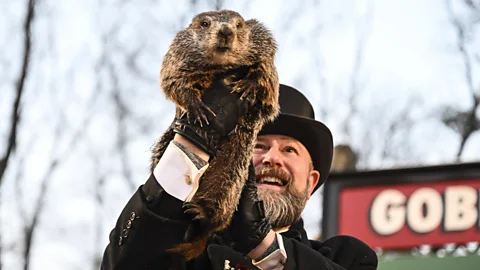
You say Groundhog Day, I say Grundsaudaag: how German and Swiss settlers in Pennsylvania created a new language and a beloved American holiday.
Every February 2nd, since at least 1886, people have gathered in the Pennsylvanian town of Punxsutawney to watch a groundhog—a furry rodent—emerge from its winter burrow. According to legend, if the day is sunny and the groundhog sees its shadow, there will be six more weeks of cold weather. If it's cloudy and there is no shadow, spring has arrived. Across the US, this quirky tradition is known as Groundhog Day. But among its original celebrants, it has a different name: Grundsaudaag.
At first glance, Grundsaudaag might seem like an old German word. However, it is actually an example of Pennsylvania Dutch, a Germanic language that emerged in the 18th century and is now mostly used by the Amish and Mennonite religious communities. Due to the rapid growth of the Amish population, which numbers almost 380,000 people and for whom the language holds special spiritual and cultural significance, this relatively little-known language is actually thriving and growing.
So, what exactly is Pennsylvania Dutch? And how is it connected to Groundhog Day?
"As a linguist and language enthusiast, I love all languages. But there is something special about the language of my heritage, the one spoken to me when I was a child," says Rose Fisher, a PhD candidate in German linguistics and language science at Pennsylvania State University.
Fisher grew up in the Amish community in Lancaster County, Pennsylvania. Her family left the community when she was 11 and now mostly uses English, she says. Even so, she adds, "I love hearing Pennsylvania Dutch spoken around me and hope that someday I will be around it more and feel more comfortable speaking it again. For me, it means I am home." She and her family still use certain Pennsylvania Dutch words when speaking English "because they refer to concepts that don't exist in the English-speaking world. One that comes to mind is 'gluschdich,' which means 'I am not hungry but I feel like eating!'"
